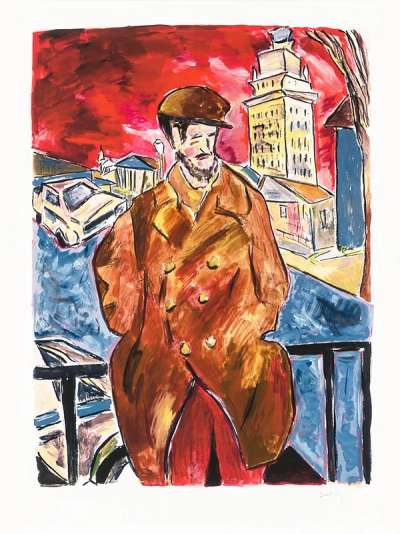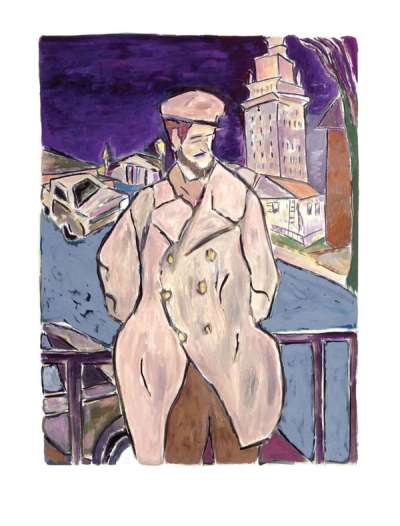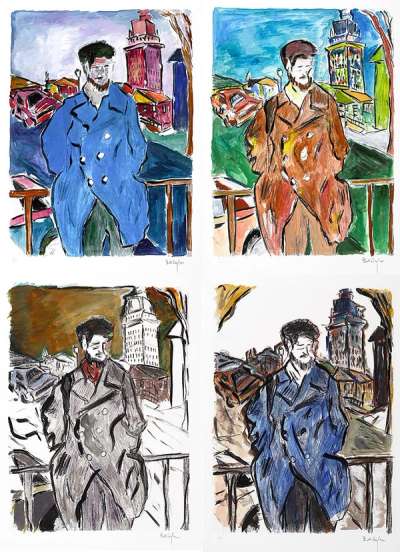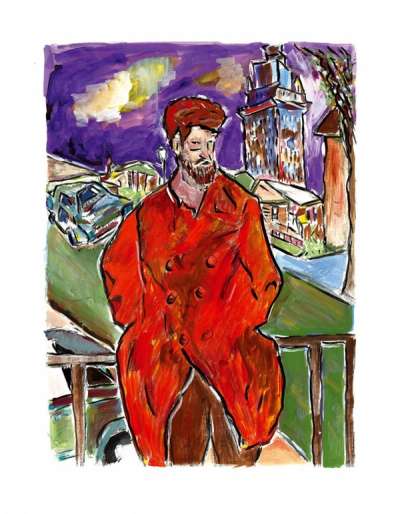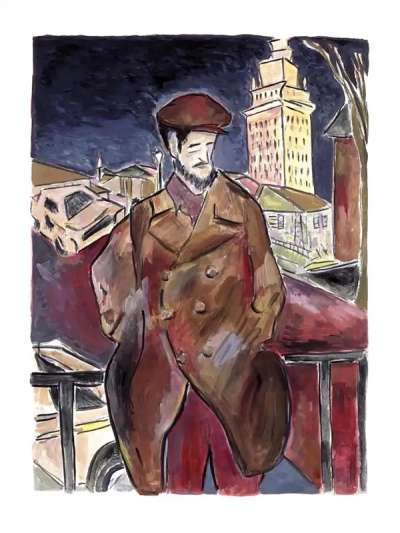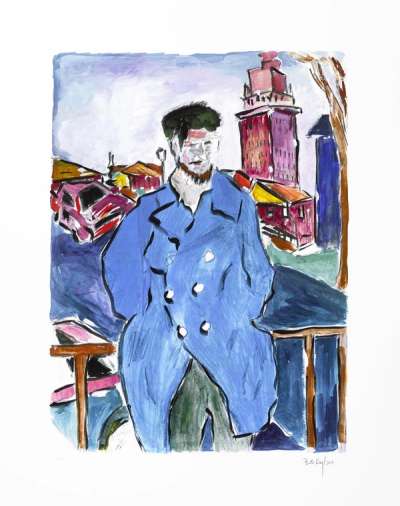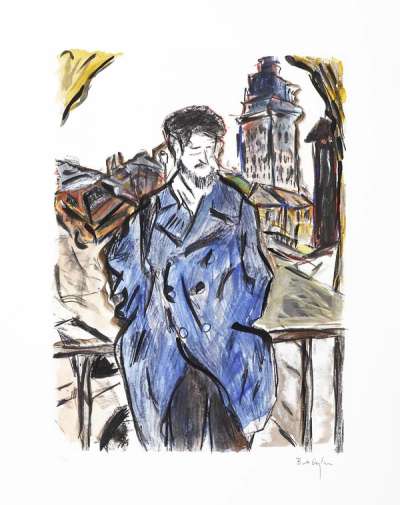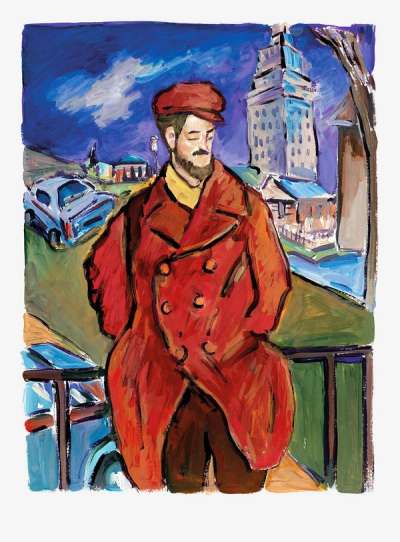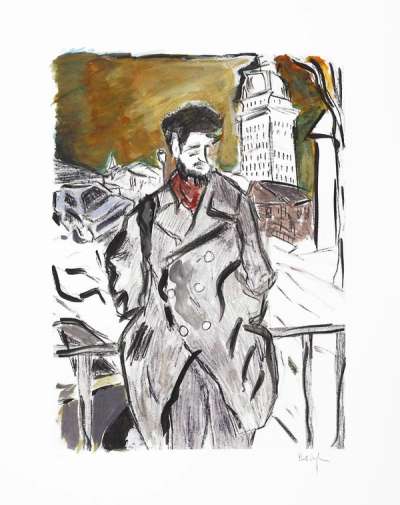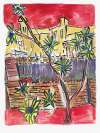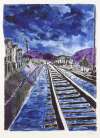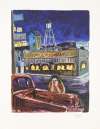Man
On A Bridge
Taken from The Drawn Blank Series, Man On A Bridge is one of Bob Dylan’s most sought-after graphics. His lone, coat-clad figure appeared in the first collection release in 2008, selling out almost instantly. As a highly collectable example of Dylan’s figurative work, this seminal artwork has been continually reimagined.
Bob Dylan Man On A Bridge For sale
Man On A Bridge Value (5 Years)
Bob Dylan's Man On A Bridge series has historically shown more modest results compared with the artist’s wider oeuvre, with auction prices ranging from £440 to £6287. Average annual growth has remained modest at -22.92%, with certain works seeing declines in value. Over 20 total auction appearances, average selling prices have held steady around £1506. This series appeals to collectors seeking accessible entry points into Bob Dylan’s print market.
Man On A Bridge Market value
Auction Results
| Artwork | Auction Date | Auction House | Return to Seller | Hammer Price | Buyer Paid |
|---|---|---|---|---|---|
 Man On A Bridge (2012) Bob Dylan Signed Print | 17 Sept 2025 | Rosebery's Fine Art Auctioneers | £383 | £450 | £600 |
 Man On A Bridge (2011) Bob Dylan Signed Print | 10 Sept 2025 | Forum Auctions London | £553 | £650 | £800 |
 Man On A Bridge Red (2018) Bob Dylan Signed Print | 10 Sept 2025 | Forum Auctions London | £553 | £650 | £800 |
 Man On A Bridge Dark Blue (2008) Bob Dylan Signed Print | 21 May 2025 | Forum Auctions London | £680 | £800 | £1,000 |
 Man On A Bridge Blue (2008) Bob Dylan Signed Print | 21 May 2025 | Forum Auctions London | £723 | £850 | £1,050 |
 Man On A Bridge Large (2010) Bob Dylan Signed Print | 19 Feb 2025 | Rosebery's Fine Art Auctioneers | £2,040 | £2,400 | £3,150 |
 Man On A Bridge (2008 Portfolio) Bob Dylan Signed Print | 21 Nov 2024 | Rosebery's Fine Art Auctioneers | £2,890 | £3,400 | £4,450 |
 Man On A Bridge Grey (2008) Bob Dylan Signed Print | 25 Apr 2024 | Duke's Auctioneers | £638 | £750 | £950 |
Sell Your Art
with Us
with Us
Join Our Network of Collectors. Buy, Sell and Track Demand
Meaning & Analysis
Like many of Bob Dylan’s figurative works, Man On A Bridge embodies a chance encounter with a nameless character. Timeless and anonymous, this solitary figure could be stood on a bridge in rural Europe or the outskirts of America; Dylan’s ambiguous storytelling places him both everywhere and nowhere.
While critics have suggested New York or San Francisco for the setting, the true location is likely to remain elusive. The composition derives from a series of drawings and sketches Dylan created on tour in Europe, America and Asia between 1989 and 1992, which he later digitally enlarged and painted onto deckle-edged paper in watercolours and gouache.
Depending on the viewer’s interpretation, the man could be deep in thought, waiting to meet someone, or simply pausing to observe the world around him. The narrative also transforms as the colour ways evolve: in one iteration, the dynamic red sky evokes a feeling of unease, whilst in others the sky is vibrant and blue, or dark and tranquil.
Dylan’s dark lines and bold colours have been compared to those of the German painters Max Beckmann and Ernst Ludwig Kirchner. His manipulation of perspective veers towards the surreal; the proportions of cars and buildings are suggested rather than precise. Bridges and cars are common motifs in his works, but as with his lyrics, Dylan has changed details and colours to produce different meanings and moods.
His exploration of American archetypes could also be at play. The anonymity of his figure gives rise to the ‘everyman’ - the ordinary American - Dylan championed through his political activism, particularly the civil rights and anti-war movements. With roots in American folk music, Dylan wrote of the lives of people in the towns and cities around him, and the visual narrative of his art is no different.
